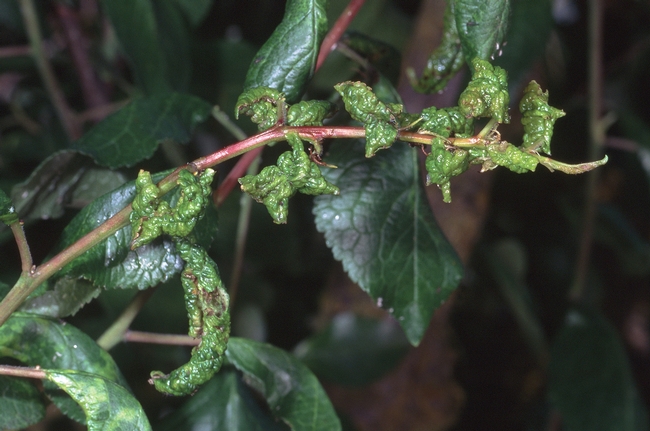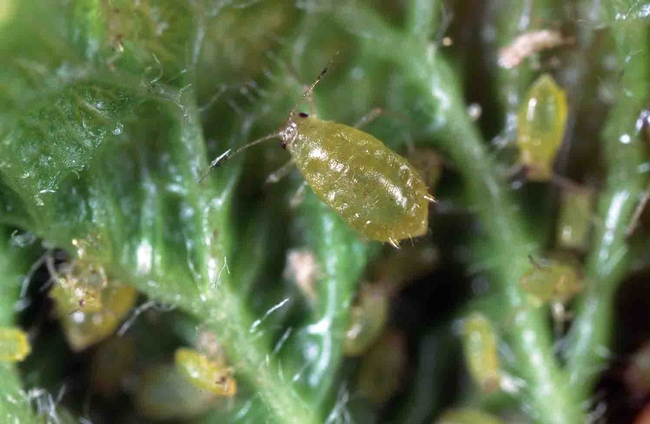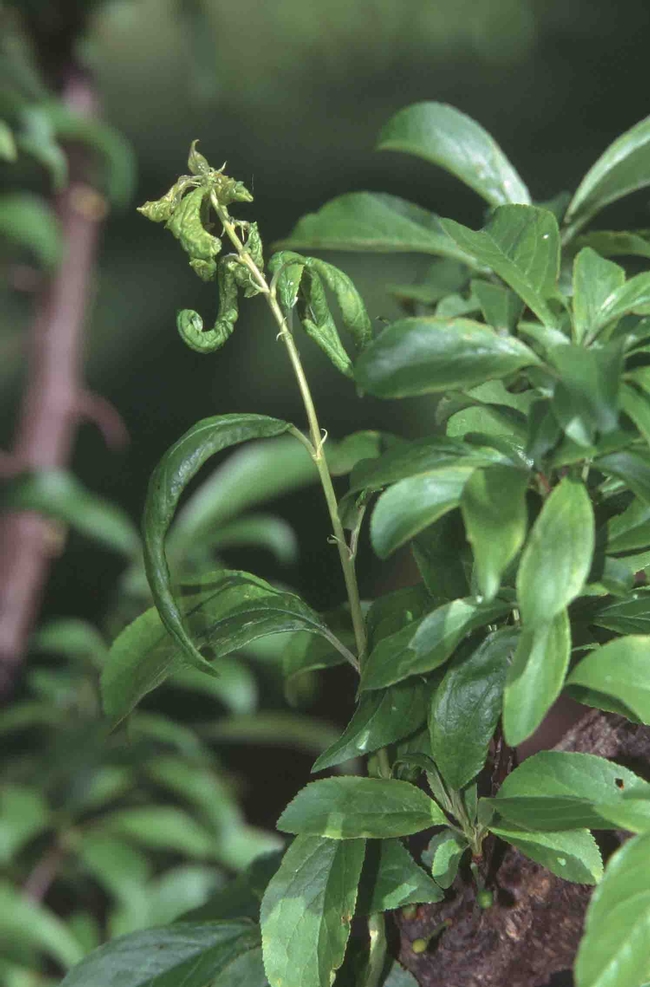Plum leaf curl is a malady indicated by tightly curled and deformed leaves which are usually near the ends of new plum shoots in the spring. Unlike leaf curl in peaches and nectarines, which is caused by a fungus, leaf curl in plums is caused by an infestation of the leaf curl plum aphid, Brachycaudus helichrysi. This insect sucks tree fluids from plum leaves, causing them to curl. Colonies of these aphids will mass inside the curled leaves on which they are feeding.
Damage caused by plum leaf curl aphid, Jack Kelly Clark, UC IPM
The leaf curl plum aphid overwinters as eggs deposited near the base of buds. In spring, the eggs hatch and the aphid population builds rapidly on newly opened leaves. In May, the aphids migrate from their plum tree host to summer host plants in the daisy family (Asteraceae). In the fall, leaf curl plum aphids return to plum trees to lay their eggs and the cycle begins again.
Plum leaf curl aphid, Jack Kelly Clark, UC IPM
Plum leaf curl damage, Jack Kelly Clark, UC IPM
The Master Gardeners Spring 2021 Workshop Series has begun. Topics include: Plant Propagation, Native Gardens, Invasive Plants, Honeybees, and a 4-part series on Firewise Landscaping. Visit our website to read about these upcoming free workshops and to register for them.
UC Master Gardeners of Butte County are part of the University of California Cooperative Extension (UCCE) system. To learn more about us and our upcoming events, and for help with gardening in our area, visit our website. If you have a gardening question or problem, email the Hotline at mgbutte@ucanr.edu (preferred) or call (530) 538-7201.



